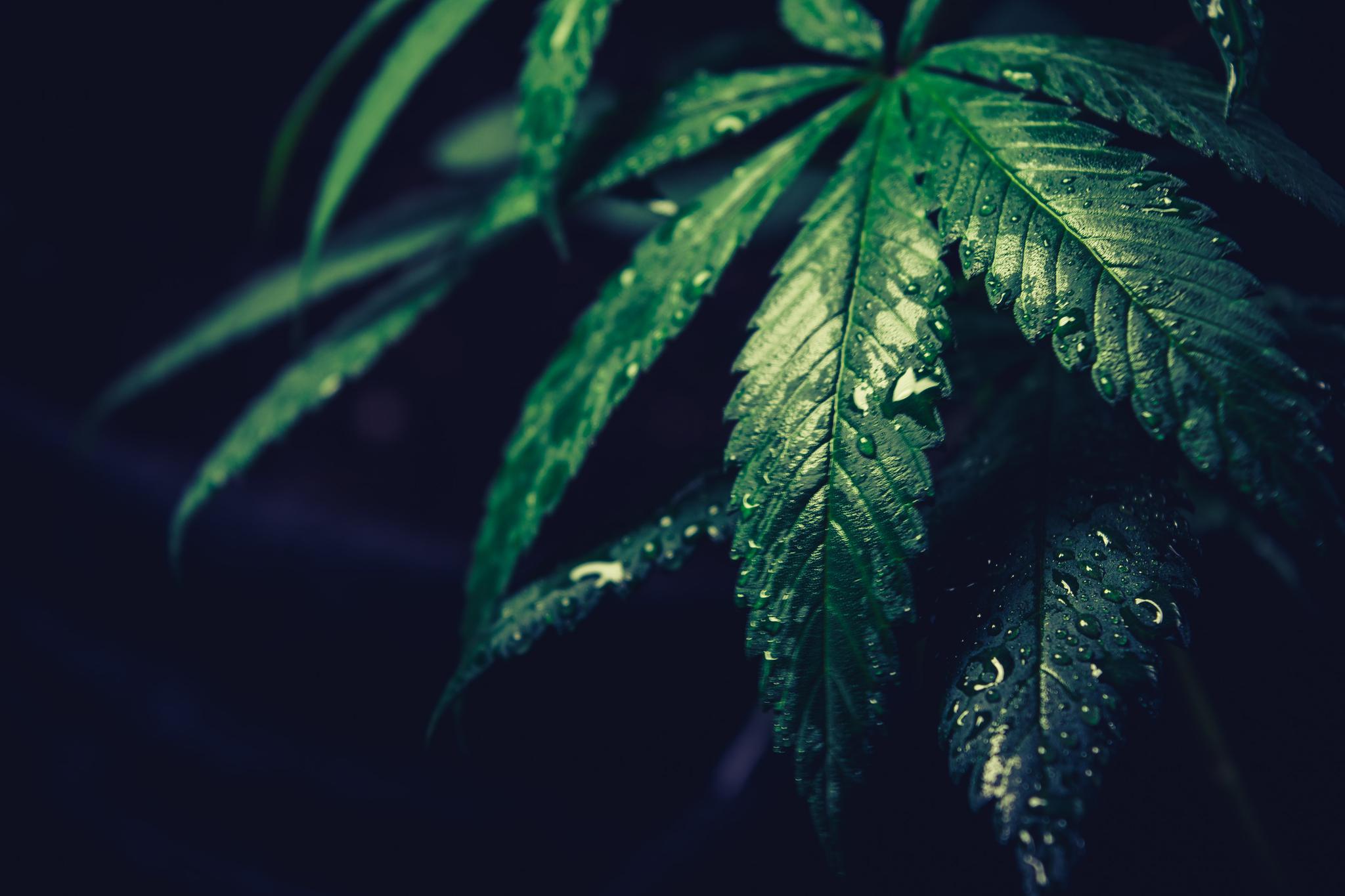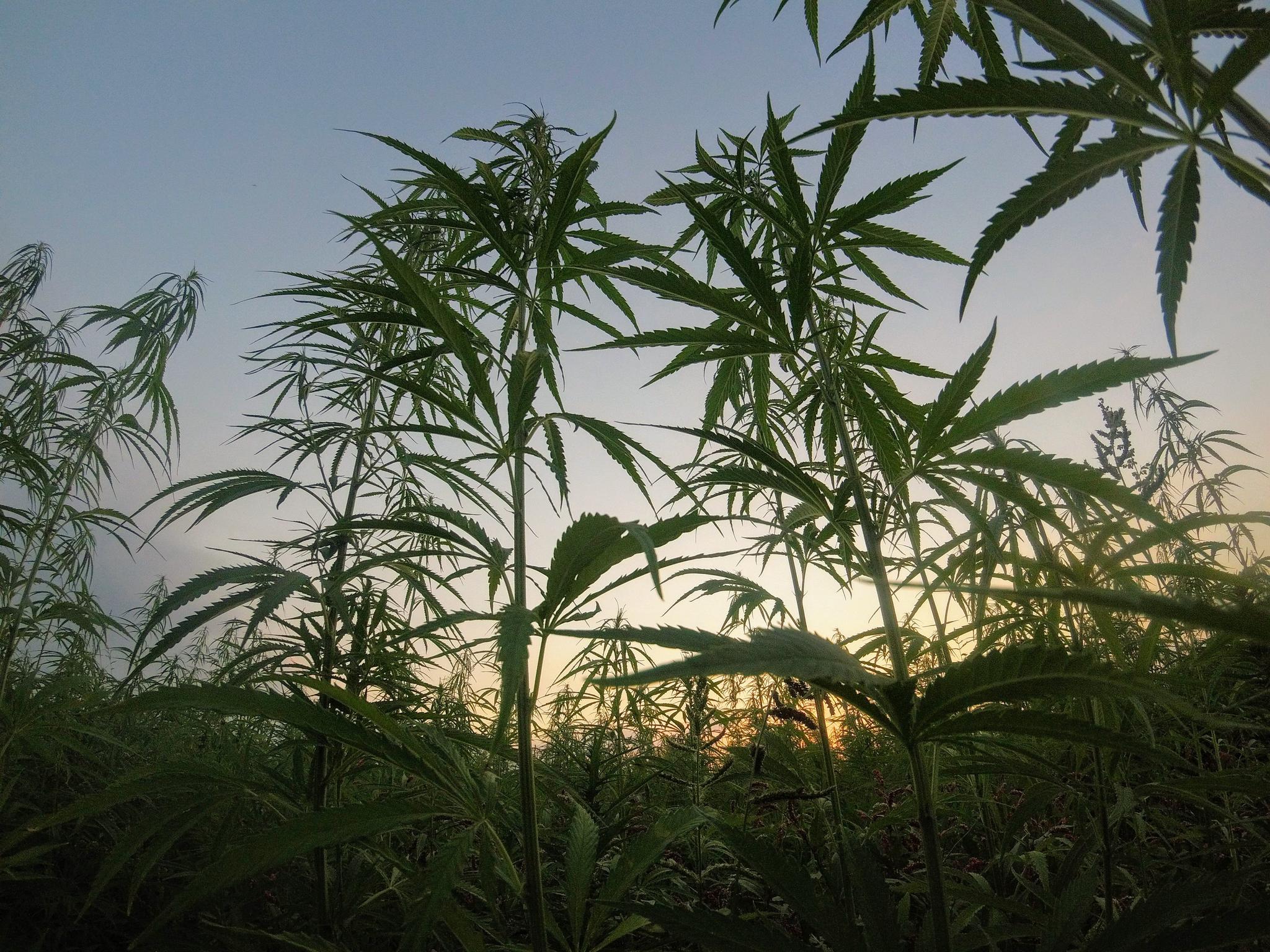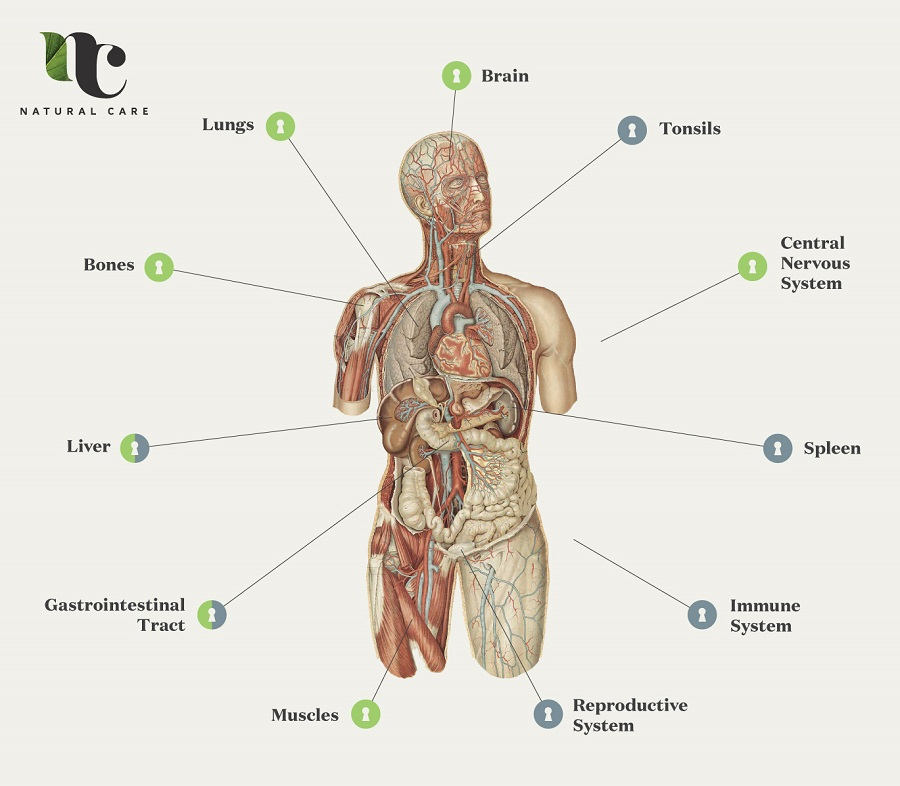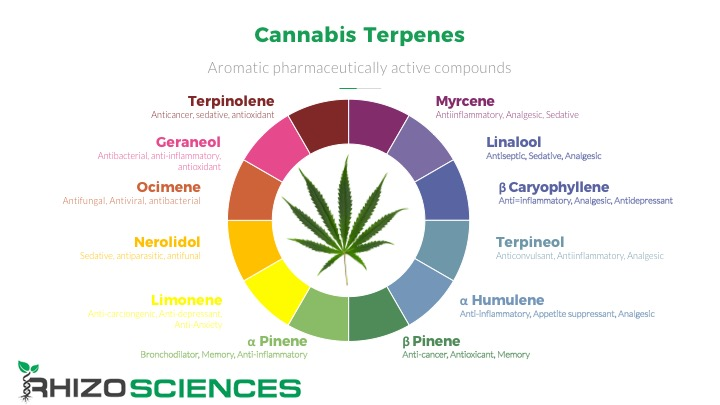Cannabis 101
In recent years conversations about cannabis have been happening more frequently. Often hearing extreme opinions on either side, there are few resources interested in providing a clear picture of the complex plant. Scientists are also learning new things all the time, and being able to navigate the basics of cannabis can feel overwhelming. Luckily, the basics of cannabis don’t change, only evolve. Most people can get by with a basic understanding of cannabinoids, the endocannabinoid system, and two most studied, and often notorious, molecules : tetrahydrocannabinol and cannabidiol.
Brief History
Cannabis has been found in history as early as 10,200 years ago in Okinoshima, Japan. With some of the earliest written records coming from China, most of the

documented uses were primarily medicinal. This is highlighted in Pen-ts’ ao Ching, the first Chinese pharmacopeia. In the 17th century, cannabis would make its way into western culture pioneered by William O’Shaughnessy and Italian doctor Raffaele Valieri. Valieri would suggest smoking hemp for symptom relief of neuropathic pain, migraine, and asthma to his patients based on the findings of William O’Shaughnessy’s earlier work in India.
In 1925 the world’s relationship with cannabis began to shift with the International Opium Convention banning cannabis for anything other than medical and scientific uses. The United Kingdom soon outlawed cannabis in 1928, and within a decade, the U.S. followed.
Recently, more countries have begun to legalize, including Canada and some states within the U.S. However, in 2019, the United States passed the Farm Bill allowing hemp to be grown for industrial and medicinal uses, as long as it’s less than .03% tetrahydrocannabinol (THC).
What is Hemp?
A misconception about industrial hemp is that there’s a difference in classifications from cannabis that induces intoxication. From the taxological sense, hemp isn’t much different from what many of us would consider “traditional” cannabis. Cannabis indica is broad-leafleted and is known for producing more THCA, which, when decarboxylated (heated up), turns into THC. THC is what provides an intoxicating effect, or the feeling of being “high” that most people associate with consuming cannabis. The real difference lies within the THC content; if it’s less than .03% THC it is qualifiable as hemp.
Hemp’s taxological classification is cannabis sativa. Also known as industrial

hemp, it is described as a narrow-leafleted plant that produces meager numbers of THCA (the precursor to THC) and higher amounts of CBDA (precursor to CBD)—normally used for its strong fiber for rope, textiles, clothing, paper, even biofuel.
Hemp can be a potent and useful tool as we move forward into more sustainable environmental practices. It can be recycled and is 100% biodegradable. In a paper published in 2018 titled New Zealand’s Industrial Hemp Industry, the author mentions that hemp has a “high carbon storage potential,” meaning it can filter large amounts of carbon dioxide at a higher rate than other plants. The plant itself is also helpful in reducing pesticide usage due to the robust nature of its root system as well. The root system is also responsible for making it durable and easy to grow in otherwise difficult land, along with the numerous products that can become available.
What is THC?
Tetrahydrocannabinol (THC) is the more well-known molecule responsible for producing the classic cannabis high and feelings of euphoria. THC is a phytocannabinoid that interacts within our endocannabinoid system to help relieve symptoms associated with different conditions, including:
THC has been shown to interact with our G‐protein‐coupled cannabinoid receptor, CB1, and modulates the CB2 receptor in our endocannabinoid system.
What is CBD?
CBD is a non-intoxicating phytocannabinoid found in cannabis, which doesn’t produce the “high” associated with THC. Cannabidol interacts naturally with our endocannabinoid system as a partial agonist to CB1 and CB2 receptors by stimulating serotonergic receptors. Hemp, or cannabis sativa, is seen with higher CBD numbers and has shown to have numerous additional medicinal benefits. This, of course, isn’t to say that CBD can’t be found in a THC high chemovar. THC: CBD ratios are becoming increasingly more popular given the additional benefits of CBD.
CBD has the ability to used for:
- pain relief
- Anti-inflammatory properties
- Anxiolytic (anti-anxiety)
- Anticonvulsant effects
The Endocannabinoid System
Endocannabinoid receptors exist in our body, with higher concentrations mainly at the cortex, cerebellum, basal ganglia, hippocampus, spinal cord, and peripheral nerves. It’s a complex system that helps regulate many physiological processes. The CB1 receptor lives primarily in much of our peripheral tissues and

cells, mainly within the central nervous system. The CB2 receptors have a more considerable influence on the immune system and the gastro tract. The results can lead to euphoria, altered pain, and helping with panic along with paranoia. These areas are responsible for regulating emotions, fear, movement, motivation, and much more, including :
- Anxiety and depression
- Appetite and Food intake
- Immune modulation
- Nausea
- Cardiovascular system
- Liver
- Fertility regulation
All mammals, including fish, birds, and reptiles (among others) have an endocannabinoid system. Even without having ever tried cannabis, our bodies naturally produce endogenous cannabinoids. The ECS helps modulate the CB1 and CB2 receptors, which are the most common receptors in humans and other mammals, by releasing these endogenous cannabinoids to bring balance to our ECS’s. Endocannabinoids are naturally occurring molecules that interact with our ECS, which our body releases when something is out of whack to help bring the systems mentioned above, and many more, to ease.
Cannabinoids
Cannabinoids are a broad term that describes any chemical compound that binds to our cannabinoid receptors. There are three main types of medicinal cannabinoid uses which are:
- Phytocannabinoids - derived from nature, found in cannabis
- Endocannabinoids - naturally occurring in our bodies
- Synthetic Cannabinoids – artificially created
Phytocannabinoids are molecules that modulate the ECS, much like THC and CBD. Other minor cannabinoids include cannabigerol (CBG), cannabinol (CBN), tetrahydrocannabivarin (THCV), and many more. All with unique roles in the endocannabinoid system. The endogenous cannabinoids our body produces are anandamide (referred to as the bliss molecule) and 2-arachidonoylglycerol (2-AG).
Endocannabinoids will release when the body’s ECS is unbalanced to bring our body back to a state of homeostasis. Phytocannabinoids do much of the same, by imitating that of endogenous cannabinoids. Both phytocannabinoids and endocannabinoids stimulate 5-HT1A, along with the TRP-V receptors known for their release of serotonin. This is in addition to the CB1 and CB2 receptors. These compounds exist in our brain, organs, immune system, and glands. It monitors your mood, movement, sleep, metabolism, and other vital functions of our body. Each one of these contribute to the phenomenon referred to as “the entourage effect”.
Terpenes and The Entourage Effect
As cannabis research continues to grow, there is an increasing interest in looking into each strain’s biochemistry to maximize medicinal benefits. Researchers are
finding that varietals vary due to several factors: cultivation practices, terpenoid content, and genetics. In many cases, terpenes are just as important, to begin to understand the elaborate genetic makeup of each strain. According to An Introduction to Terpenes Science & Cultivation published in 2018, the authors mention that there have been over 50,000 terpenoids discovered globally in plants alone, with over 250 non-cannabinoid terpenoids and anywhere from 145-150 cannabinoid terpenes that occur in cannabis.
As mentioned in regards to hemp, the classifications of cannabis indica and cannabis sativa have more to do with cultivation, along with THC and CBD percentage.Those classifications have less to do with language used to depict energy specificity. However, due to a lack of consistency within colloquial phrasing with cannabis, many confuse THC potency for the nuances of each strain. What will ultimately allow for a more energetic or relaxing experience is due to the terpene content in combination with the aforementioned phytocannabinoids.
Terpenes are naturally occurring essential oils, and are important to take into

consideration when available. A process referred to as “the entourage effect” plays a vital role in the way we respond to cannabis. The term explains how THC, CBD, and other naturally occurring compounds are all responsible for the different sensations within each chemovar, and in turn, experience. Together they produce a more complex response, showing that terpenes can provide additional benefits other phytocannabinoids do not.
Different Terpenes
There are over a hundred cannabis specific terpenes. Each has the ability to change the experience based on the terpene profile. Some common terpenes are:
- Beta-Caryophyllene
- Linalool
- Limonene
- Humulene
- Myrcene
Beta-caryophyllene is a terpene that exists in cannabis, along with black pepper. This terpene has shown to interact with the CB2 receptor providing relief from inflammation in similar ways as CBD. Linalool, also in lavender, has shown immense potential in curving symptoms of anxiety, including possessing sedative properties, antidepressant abilities, and demonstrated potential for immune-boosting benefits.
Taking terpene content and phytocannabinoids into consideration will help maximize the medicinal benefits which will be beneficial to the consumer.
Deciphering Indica and Sativa

Despite the taxonomic classifications, cannabis is mainly broken down into three categories of flower. Product can produce a multitude of effects, and when trying to depict the type of experience one will have, it will vary depending on the aforementioned factors. Normally, a particular type of chemovar will fall into one of the three colloquial terms which are:
- Indica- Known for producing a classic “couch lock” type of experience
- Sativa- Tends to have a more energizing profile
- Hybrid- A more balanced experience
Keep In Mind With Cannabis
Everyone’s biochemistry is different, and as a result, what works for one individual may not necessarily work for another. Taking into account consumption methods is important, including, the environment you’re in, and headspace are all factors that can improve or potentially dampen the experience. Experimentation is important to understand what will work best with your body. As with most holistic remedies, there is no one size fits all treatment. It is vital to focus on cannabis education in order to maximize the medicinal and environmental benefits of this complex and dynamic plant.
